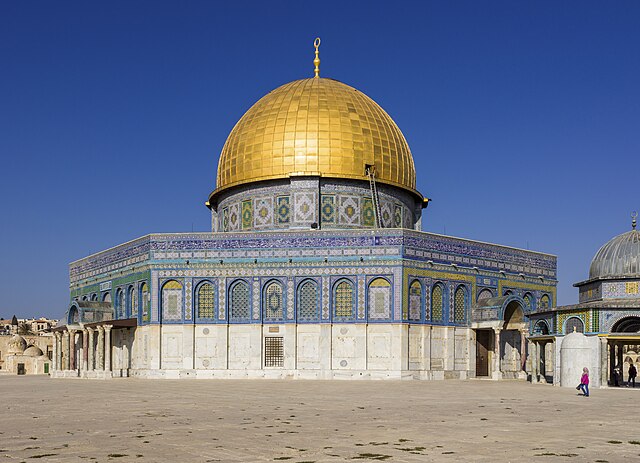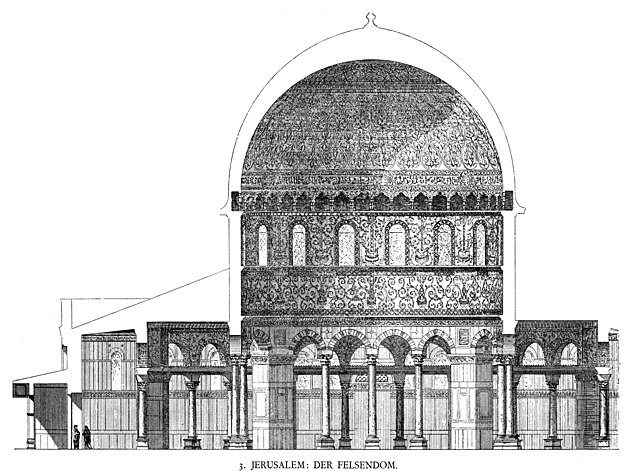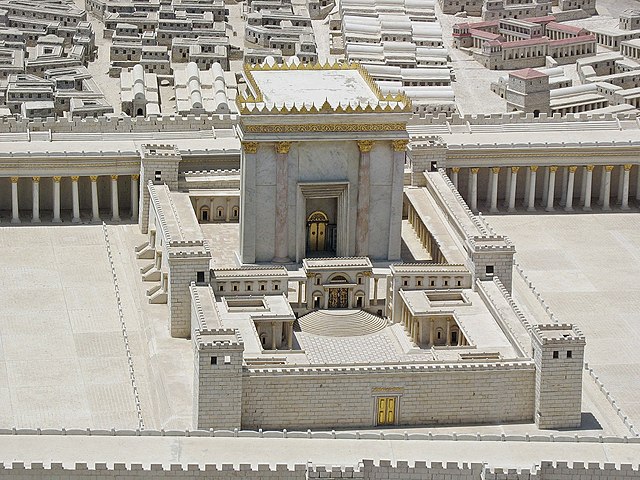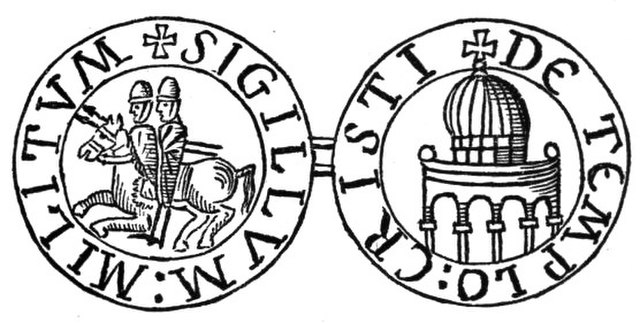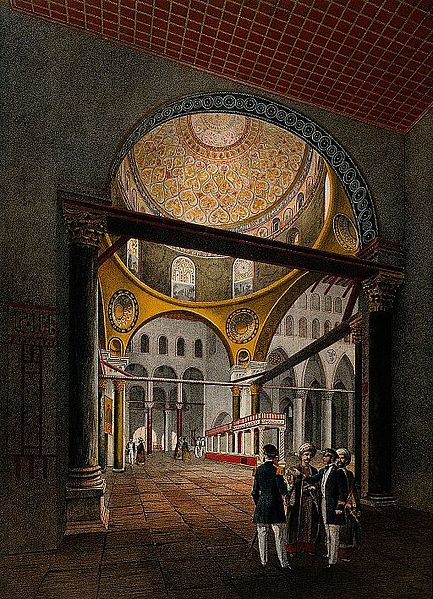The Dome of the Rock is an Islamic shrine at the center of the Al-Aqsa mosque compound on the Temple Mount in the Old City of Jerusalem. It is the world's oldest surviving work of Islamic architecture, the earliest archaeologically attested religious structure to be built by a Muslim ruler and its inscriptions contain the earliest epigraphic proclamations of Islam and of the Islamic prophet Muhammad.
The Dome of the Rock on the Temple Mount (Al-Aqsa) in the Old City of Jerusalem
Cross section of the Dome (print from 1887, after the first detailed drawings of the Dome, made by the English artist Frederick Catherwood in 1833).
Reconstruction of Herod's Temple as seen from the east (Holyland Model of Jerusalem, 1966)
Depiction of the Templum Domini on the reverse side of the seal of the Knights Templar
Al-Aqsa or al-Masjid al-Aqṣā is the compound of Islamic religious buildings that sit atop the Temple Mount, also known as the Haram al-Sharif, in the Old City of Jerusalem, including the Dome of the Rock, many mosques and prayer halls, madrasas, zawiyas, khalwas and other domes and religious structures, as well as the four encircling minarets. It is considered the third holiest site in Islam. The compound's main congregational mosque or prayer hall is variously known as Al-Aqsa Mosque, Qibli Mosque or al-Jāmiʿ al-Aqṣā, while in some sources it is also known as al-Masjid al-Aqṣā; the wider compound is sometimes known as Al-Aqsa mosque compound in order to avoid confusion.
Aerial view of the Al-Aqsa mosque compound atop the Temple Mount
Southwest qanatir (arches) of the Al-Aqsa. Qubat al-Nahawiyya is also partially visible to the right.
The main mosque prayer hall along the southern wall of Al-Aqsa
A 19th-century chromolithograph of the prayer hall's interior. The mosaic designs on the drum of the dome, the pendentives, and the archway in front of the mihrab date from the mid-11th-century Fatimid reconstruction

